If anyone had asked me a year ago which state was on the top of my list for a possible vacation, the answer would not have been Tennessee. But one spring day my dear friend Kristahn called and asked me a question that changed everything.
Kristahn had moved three years earlier from New York City to Los Angeles, and though I saw her a few times a year in either city, we’d had a shared dream of going on vacation together since she defected to the West Coast. We’d been fantasizing about a trip to Buenos Aires for years, but the truth was that I was broke and she was a workaholic. Neither of us had the time or money for a jaunt to the Southern hemisphere.
We finally agreed on staying stateside, meeting somewhere “in the middle.” But how to choose? I’d heard good things about Kansas City barbecue and Kristahn was dying to check out the Minnesota State Fair. But then, I got that fateful call. “What state is Dollywood in?” Kristahn asked. And suddenly, our plan became clear. We simply had to make pilgrimage to the living shrine of the greatest country legend of all time—Dolly Parton.
Dollywood (2700 Dollywood Parks Boulevard, Pigeon Forge, dollywood.com) is situated on the cusp of Great Smoky Mountains National Park (nps.gov/grsm), among a series of highways lined with motels, pancake houses, a scale model of the Titanic and every kind of dinner theater imaginable. Parton founded the theme park in 1986, transforming this poor Appalachian region of eastern Tennessee into a profitable tourist destination virtually overnight. She had grown up one of 10 children in a two-room cabin in Locust Ridge, not too far away from the site of present-day Dollywood—which today features an exact replica of her “Tennessee Mountain Home.” Using her star power to create jobs for local musicians, artisans and even her own family, Parton singlehandedly revitalized a community that had previously gone without—much as Parton herself had done during her childhood. Dollywood is a multi-million-dollar operation, employing 3,000 local workers and drawing 2.5 million die-hard Dolly fans to the towns of Pigeon Forge and Gatlinburg every year.
And that was exactly where Kristahn, my girlfriend Laryssa and I decided to meet “in the middle.”
But first, to allow the momentum to build, we toured the entire state of Tennessee, starting with the honky-tonks in Nashville, a stop by Graceland in Memphis, a visit with the Amish in Etheridge (yes, you read that right) and a stop by the Rhea County Courthouse, the site of the 1925 Scopes Monkey Trial.
We also checked out the one lesbian dive in Music City (Lipstick Lounge, and it was rockin’), and made out in front of anti-gay protestors on Memphis’s Beale Street. Tennessee has a lot going for it, but for three queer gals, it’s not exactly up to West Village/Hollywood standards. Still, for all the second-thoughts about public hand-holding that my girlfriend and I had to struggle with, we all knew there was one glorious, blonde, full-figured light at the end of the tunnel—er, state. Finally, we headed east.
We began our eastern Tennessee exploits in Knoxville, home of the 1982 World’s Fair, the Women’s Basketball Hall of Fame (700 Hall of Fame Drive, wbhof.com) and bluegrass. After a late check-in to the quirky and almost definitely haunted Hotel St. Oliver (407 Union Ave, stoliverhotel.com), we meandered to Market Square, which is more like a rectangle filled with restaurants and music clubs. The most famous of the latter is Preservation Pub (28 Market Square, preservationpub.com), which hosts live acts every night from 10pm onward. After a few Nashville-brewed Yazoo Dos Perros Ales, we turned in. (The St. Oliver is currently under renovation, which we hope means they’re replacing the lumpy beds but not the hotel’s character. It re-opens this summer.)
The next day we grabbed a to-go lunch from the Tomato Head (12 Market Square, thetomatohead.com), a veg-friendly sandwich shop on Market Square, and took our goods over to the Knoxville Visitor Center (301 S Gay St, Knoxville.org). Besides being home to a gift shop full of retro Tennessee “Volunteer” girl prints, the center hosts WDVX’s live bluegrass broadcast—also known as the “Blue Plate Special”—Mondays through Saturdays at noon. As we chomped on our tuna and sprouts (BBQ is also for sale at the Visitors Center), we were introduced to Bailey Cooke, a Tennessee- based singer-songwriter who played a mean banjo and won us over with her cover of the old-time banjo classic “Tell Her to Come Back Home.”
The Visitors Center is located on Gay Street, which is the heart and soul of Knoxville’s downtown. Along the short stretch, we found Yee-Haw Industries (413 S Gay St, yeehawindistries.com), a letterpress that has been printing bluegrass show posters and other curiosities since 1996 (look them up on Etsy); Mast General Store (402 S Gay St, maststoreknoxville.com), a 113-year-old purveyor of outdoor-wear, local jams and candy; and Downtown Wine & Spirits (407 S Gay St, dtwine.com), which has a wider selection of Kentucky bourbons than we knew existed, and where we loaded up on Tennessee’s lesser known but far superior whiskey, George Dickel (dickel.com). (They have plenty of the other Tennessee whiskey, too—Jack Daniels.) Well prepared to spend our evening in dry Sevier County, we said goodbye to Knoxville and drove off into Appalachian country.
Just 40 minutes outside of the city, the Museum of Appalachia (2819 Andersonville Hwy, Clinton, museumofappalachia.org) was one of the nicest surprises of our whole trip. As the area began developing into highways, housing tracts and fast-food joints back in the mid-1960s, local teacher John Rice Irwin realized the importance of preserving the history of his ancestors. He started collecting curios and artifacts at auctions, from instruments made of hollowed-out gourds to hearses, and as the elders of the community died or families moved, he collected their homes, too—often single-room wooden cabins. Irwin stationed his collection here, a tract of land untouched by the suburban sprawl around it, and populated it with peacocks and porch pickers—old-time banjo players. Now the Museum of Appalachia features 35 mountain homes, and is the site each fall of the Tennessee Homecoming, a festival that welcomes back descendants of the original Appalachian dwellers.
From there, we climbed in altitude on increasingly windy roads, through Pigeon Forge, past the official entry point of Great Smoky Mountain National Park and into Gatlinburg. This mountain town is a haven for outdoorsy families, with clusters of Alpine cabins and arcades. But beyond the town’s center, country roads shooting off the main drag lead higher and higher into the wild. It was on one of those roads that we found the Buckhorn Inn (2140 Tudor Mountain Rd, buckhorninn.com), a cozy lodge with breathtaking views, a gourmet kitchen and sprawling grounds replete with wooden swings, a labyrinth and a resident swan.
The Buckhorn Inn is a popular spot for serious Smoky-goers; it doesn’t draw the dinner theater and arcade crowd that the roadside motels down in Pigeon Forge do. But it certainly has its Dolly fans. Its owners have met the star many times, getting an invite every year to the Dollywood opening parade, an annual festival that brings the legend herself through the area via float. It was at the Buckhorn Inn that we whiled away many hours on the back porch, watching the Smoky Mountains turn from green to dusky blue to black over a few bottles of wine we smartly brought from Knoxville, and talking about all the things we would say and do if we ever got to meet Dolly in the flesh.
It’s hard to explain in words what’s so special about Dolly. It would be easier for me to share her brilliance through a carefully culled selection of tracks and YouTube clips. But here goes: Dolly is proof that nice gals do finish first. She is the finest example of how to accept success with grace. And her songs—which she prolifically wrote—tackle every human condition worth singing about. Devotion: “I Will Always Love You.” Pain: “Jolene.” Childlike simplicity: “Love is Like a Butterfly.” But most of all, Dolly is nice. She’s good. Her fans are often heard saying how much they just want to hug her. Including the three of us.
The next morning we awoke early and excited. We drove back down the mountain toward Pigeon Forge and onto Dollywood Lane, her classics blasting over the car speakers, Laryssa and I in front and Kristahn, practically shrieking in the back. As we pulled into the front gate of the park, the CD’s next track came on. It was “Here You Come Again,” arguably Dolly’s best song, about always falling back in love. “Here you come again,” she sang to us. It was our first time there, but it was like we had come home.
The best time to visit Dollywood is in late May—just before school lets out and the park becomes swamped with camp groups and traveling families. There were no lines on any of the ample roller coasters, which we went on repeatedly. Thrilling as they were, though, they were not the highlight of the day. Rather, it was the news we received soon after arriving, during a viewing of one of Dolly’s tour buses, that the star herself was in the park that day. She was being filmed by a crew for a documentary about the 25th anniversary of Dollywood. And she was accompanied by none other than the other island in her stream, Kenny Rogers.
The moment we got the secret news from the staffer working the tour bus line, we knew we had our work set out for us. When Dolly visits, she often makes surprise appearances at the musical shows on stages throughout the park, the staffer told us. There were too many to see, but the most promising one, “Dolly’s Family Reunion” took place on the back porch of her mountain home replica. The show starred actual members of Dolly’s family, including her uncle Bill Owens, a country legend in his own right who gets credit for starting the career of his 10-year-old niece, Dolly, by letting her come along on a radio gig. We saw the show three times. We even became buddies with Uncle Bill. But Dolly never appeared. Resigned, we did a few more rounds on the roller coasters, had the best cinnamon bread ever, and bought a new paisley and hot-pink suitcase to hold all the souvenirs we got at Dolly’s Closet—a Parton-inspired clothing store.
Walking out of the park that day, the suitcase rolling behind us, we were not disappointed that we didn’t meet Dolly in person. Somehow, it was as if we’d been with her all day long. Her presence, her aura, reached every corner of that park. In fact, it reached every corner of this part of Tennessee. Back in Pigeon Forge, Dolly was everywhere. Including on a giant screen, framed by rippling American flags, as she sang the Star Spangled Banner for the finale of Dolly Parton’s Dixie Stampede (3849 Parkway, dixiestampede.com). (We couldn’t come here without going to at least one dinner theater!)
The next day, still high from our near brush with a legend, we made our way deep into the Smokies outfitted in our finest new Dolly-wear. First we drove through beautiful Cades Cove, a sparkling green valley surrounded by historic Appalachian buildings. We then took a short hike (five miles round-trip) to Abrams Falls, which were tiny, practically trickling, but a beautiful escape nonetheless.
On our way to the airport, where Laryssa and I would part ways with Kristahn, we swung by Blackberry Farm (1471 West Millers Cove Road, Walland, blackberryfarm.com). If you can make it past the guard llamas, this working farm offers well appointed guest houses, ridiculous views and an exclusive price tag. Non-guests are welcome to the grounds for a gourmet dinner at The Barn, a rustic and romantic restaurant that, guess what, used to be a barn. Just when we were about to rue the day we decided on dining at the Dixie Stampede instead of here (blasphemy!), one staffer gave us a nice consolation prize: news of an awesome joint nearby, housed in a former gas station: Full-Service BBQ (113 S Washington St, Maryville, fullservicebbq. com). It might not have been homemade sheep cheese and blackberry jam, but it was a darn good last meal in Tennessee, and one that would have made humble Dolly Parton proud.n


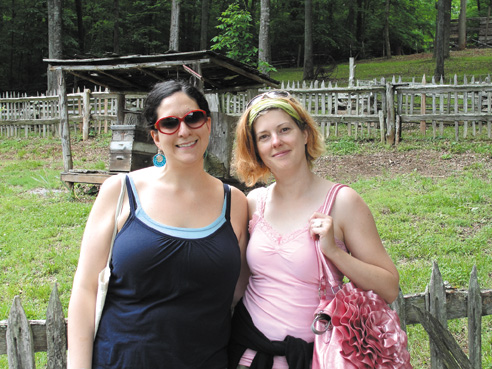
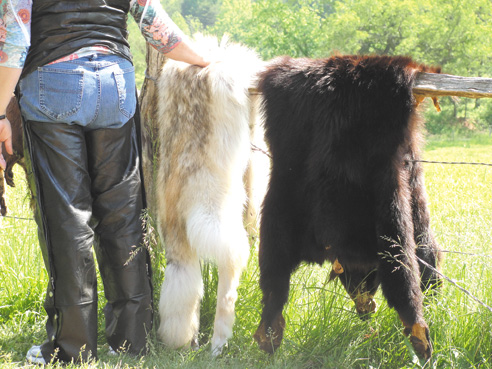

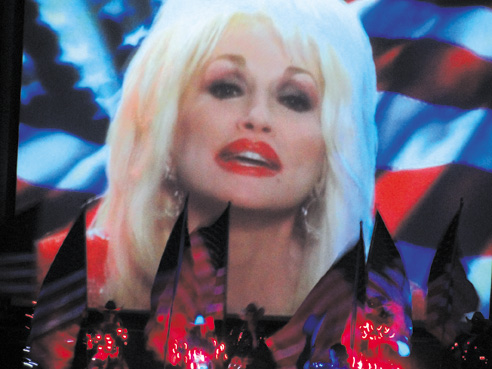
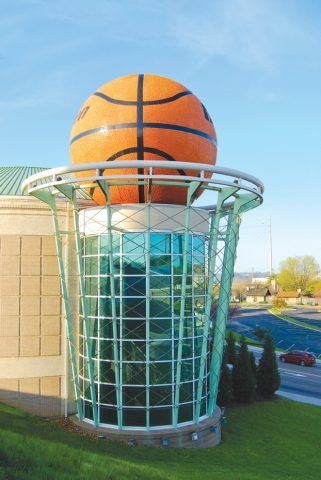

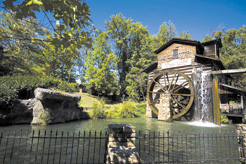
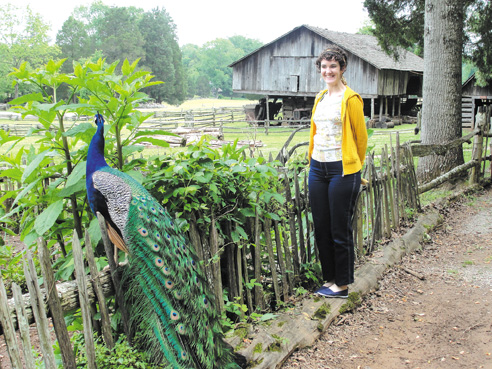

What Do You Think?